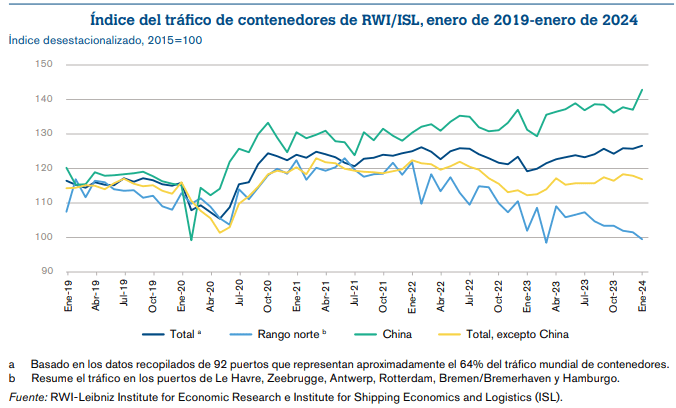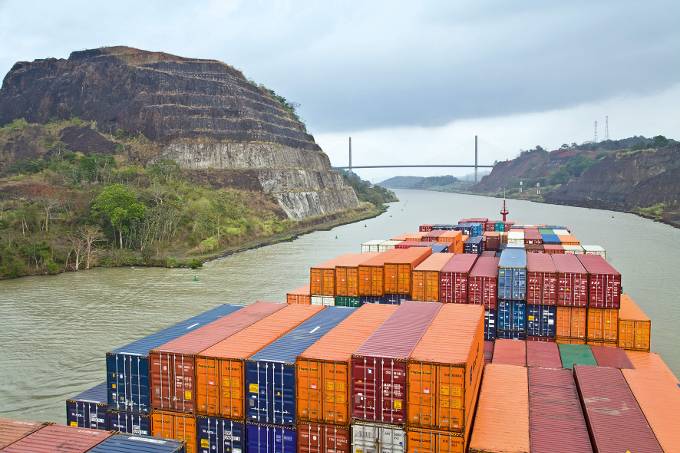In 2023, total container traffic as measured by the RWI/ISL index decreased 0.6 percent from the previous year, the WTO referred.
This figure is very close to the WTO’s estimate for world merchandise exports (-0.6 percent).

Apparently, the agency added, in January global traffic increased 6.2 percent compared to the same month in 2023, but this was mainly due to an 8.9 percent increase in Chinese port traffic.
Container traffic
What does the RWI/ISL traffic index measure? It is based on container traffic from 92 ports, accounting for 64% of world trade, making it reasonably representative of world merchandise trade
The RWI/ISL consists of container throughput data from those international ports collected continuously by the ISL Monthly Container Port Monitor as part of its market observation.
Total traffic, excluding China, only increased 4.2 percent, while traffic in Northern European ports decreased 2.5 percent.
According to the WTO, the total traffic index shows that global container traffic has increased slowly in recent months, indicating that the recent attacks on shipping through the Red Sea have had a limited effect on trade.
However, the simultaneous increase in traffic at Chinese ports and the decrease in traffic at European ports in January could be related to shipping delays.
Shipping routes
According to Safe Bulkers, world events, including terrorist attacks, other international hostilities and potential disruption of shipping routes, such as the Russia–Ukraine war and the Israel-Hamas war and disruption of trade in the Red Sea, could negatively affect its operating results and financial situation.
Acts of piracy have historically affected ocean-going vessels trading in regions of the world such as the South China Sea, the Indian Ocean and the Gulf of Aden off the coast of Somalia.
Although the frequency of maritime piracy worldwide has generally decreased since 2013, incidents of maritime piracy continue to occur, particularly in the Gulf of Aden off the coast of Somalia, and increasingly in the Sulu Sea and Gulf of Guinea, with dry cargo vessels and oil tankers particularly vulnerable to these attacks.

